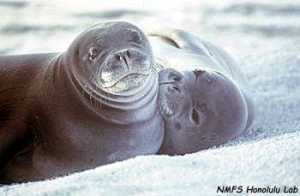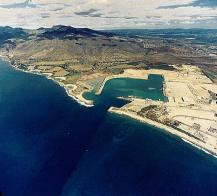Blog
News, updates, finds, stories, and tidbits from staff and community members at KAHEA. Got something to share? Email us at: kahea-alliance@hawaii.rr.com.
Shrug it off or contemplate security on the ground level?
From: Andrea
The article says Hawaiians are shrugging off the North Korean missile threat.
http://www.nytimes.com/2009/06/23/us/23hawaii.html?ref=americas
After all, Hawaiians are accustomed to the various threats and dangers of inhabiting the Planet’s most isolated archipelago. We are out here far from quick and convenient aid from the mainland.
But, perhaps, this threat should be an opportunity to reconsider how secure and independent Hawaii truly is, out here in the middle of the Pacific. While it may not be time to start worrying about missiles and the universe of possible terroristic threats, which may be unstoppable on a community level, the time is ripe to consider security the people of Hawaii can control.
For instance, food security is something as tangible as dirt in your hands and food in your belly. Obvious to everyone who buys groceries around here, a huge amount of food sold in stores is imported, reflected by the price. The exact percentage of imported food may be debatable, but the need for more food production here in Hawaii is undebatable.
What’s an easy way to improve food security here in Hawaii? Support local farmers markets! For instance:
Kapiolani Community College Farmers Market
4303 Diamond Head Road
Honolulu, HI 96805
Saturdays, 7:30 a.m. – 11 a.m.
For more info, see:
Empty Reefs
From Alana:
This BBC News video shows how the growing demand for fish in places like inland China is putting a huge stress on coral reefs. Most adult fish have been caught, so the majority of fish sold in markets are juveniles that have not had a chance to reproduce yet. Because of this trend there has been a downward spiral in fish populations and reef health worldwide.
The world needs stricter fishing regulations ASAP, and if that doesn’t happen we will probably see the collapse of entire ocean ecosystems in our lifetimes.
The EPA Just Doin' Their Job...
From Melissa:
The Environmental Protection Agency gets on the Department of Transportation’s Harbor division to clean up their act. It’s a start, thanks guys.
The U.S. Environmental Protection Agency said today it recently ordered the state Department of Transportation’s Harbors Division to comply with federal Clean Water Act stormwater regulations at Honolulu and Kalaeloa-Barbers Point Harbors.
Fuel, oil and debris carried by stormwater from the Harbors Division and tenant facilities discharge directly into harbor waters and through municipal storm drains running to harbor waters.
To read the full article click here
Monk Seals Compete with Fishing Industry for Food
From Melissa:
Much is being done in the way of critical habitat designation to ensure the survival of the Hawaiian monk seal. Is it enough though? These precious creatures inhabit the Northwest Hawaiian Islands (NWHI) and are at high risk of becoming extinct due to death caused by starvation, predation, males accidentally killing females in the mating process and entanglement in fishing gear.
enough though? These precious creatures inhabit the Northwest Hawaiian Islands (NWHI) and are at high risk of becoming extinct due to death caused by starvation, predation, males accidentally killing females in the mating process and entanglement in fishing gear.
NOAA decided last year the Caribbean monk seals had become extinct, and has observed that the Hawaiian breed has reached a population of about 1,200, declining by abut 4 percent a year during this decade. Federal Judge Samuel King noted nine years ago that it was likely that the fishing industry “contributes to the starvation of the monk seals,” but fisheries strongly deny it.
For whatever reason, the seals apparently are not getting enough to eat. Fitted with compact video cameras in a National Geographic project from 1995 to 2002, they were seen dining on a wide variety of crustaceans, squid, octopus and fish, competing for food with large and hungry ulua.
Should more restrictions and rules be enforced in the critical habitat of the Hawaiian monk seal? As of today, eight fishing boats based out of Honolulu are permitted to fish in certain areas of the NWHI, one of which, very recently was caught fishing in a restricted area. These vessels catch approximately half of the locally landed bottomfish in Hawaii. By revoking these permits, the fish populations will likely replenish, leading to more food for the monk seals thus less starvation. Could this be the way to go to further protect the monk seals or would it just enrage the fishing industry?
To read the full article follow this link:
To learn more about this issue please follow the link provided:
Fishing in NWHI?
From Alana:
On June 15, the third anniversary of the designation of the Northwest Hawaiian Islands as a national monument, a boat that was caught fishing multiple times in a highly protected area of the Papahanaumokuakea Marine National Monument. The bottom-fishing boat was in a very restricted area of the monument, which extends 50 miles from each of the atolls. This sanctuary is the main home for dozens of highly endangered species including the hawaiian monk seal and green sea turtle. Considering that, and all the press they’ve been getting, one would think they are facing huge charges.
The truth is that they are only facing $130,000 to as little as $1,000 in fines.
Wait, wasn’t a woman just charged $1.9 MILLION for downloading 24 songs illegally off of the internet?
This is a repeat offense case. The fishermen obviously knew where they were becasue of their reaction to the plane. Why doesn’t the government use this case to set an example for others who might have plans to fish in the protected area?
This boat is one of eight Honolulu-based fishing boats permitted to fish in a designated area of the monument. The boat was fishing outside of this area, but it still raises the question: why are these eight boats allowed there at all? What are their restrictions and how do we know they are following them?
Mismanagement needs to be dealt with now, and the correct consequences need to be issued.
Red. Handed.
Vessel caught illegally fishing in the Northwestern Hawaiian Islands:
A Coast Guard search plane on patrol of the Papahanaumokuakea Marine National Monument spotted a U.S.-flagged vessel fishing in a special preservation area within the monument on June 15. The Coast Guard said it took video and still photos of the vessel’s crew hauling its lines out of the water and the ship then “abruptly getting underway.”
The aircraft flew out of sight, but when it returned the vessel’s crew had put its lines back in the water and resumed fishing, the Coast Guard said. The incident was reported to the National Oceanic and Atmospheric Administration’s Office of Law Enforcement, which ordered the vessel to cease fishing and return to Honolulu.
The name of the vessel, which reached port on Saturday, was not released because the case is under investigation. The vessel’s owner faces charges of illegally fishing in the national monument and fines from $1,000 to $130,000 for a repeat offense.
Papahanaumokuakea spans nearly 140,000 miles and is the largest marine protected area in the world. The Northwestern Hawaiian Islands chain is home to more than 7,000 marine species and is the primary habitat for critically endangered Hawaiian monk seals and green sea turtles.
See full article in the Honolulu Advertiser.
Monk Seal Protection Update
from Stewart:
After the Surfrider Foundation’s Kauai chapter offered a reward for information leading to the arrest and conviction of the person responsible for killing two Hawaiian monk seals on Kauai, it raised an obvious question: Why is the Surfrider Foundation having to offer a reward? Where is the federal government?
It turns out officials from the National Oceanic and Atmospheric Administration enforcement division have been investigating the monk seal shootings and went so far as to search a white pick-up truck in hopes of finding the gun used to shoot one of the seals. Click here to read the article. The special agent in charge of NOAA’s Pacific enforcement offfice said the investigation involves a lot of gum shoe detective work and that agents have been able to find some witnesses despite the remoteness of the areas where the seals were killed.
The feds are not just investigating killings; they are also proposing to expand monk seal habitat. In response to a petition from Kahea and two other organizations, the federal government last week announced it would expand the monk seal’s critical habitat to include portions of the main Hawaiian Islands. Here’s the link. The move will not restrict recreational activities like fishing or surfing in the critical habitat areas, but will restrict federal government activities and activities that require federal permits, such as dredging and coastal development.
NOAA has published the regulations expanding the habitat in the Federal Register. Here’s the regulation. And the public has the right to comment; please sign Kahea’s petition in support of the habitat protection.
In the meantime, here’s some monk seal trivia gleaned from NOAA’s proposed regulations.
– Despite concerns of some local fisherman that monk seals are competing for fish, studies have shown that seals prefer eels, wrasses, and bottom-dwelling benthic species and therefore do not compete for many of the fish humans seek to catch for sport and sustenance.
– NOAA received over 100 comments in support of expanding the monk seal’s critical habitat to the main Hawaiian Island; people see the main islands as essential because monk seals are in better physical condition on the main islands than the Northwest Hawaiian Islands and because the low-lying islands and atolls of the Northwest Hawaiian Islands are losing seal habitat because of rising sea levels.
– Scientists believe monk seals occurred in the main Hawaiian Islands before the arrival of humans and are indigenous to the whole Hawaiian Archipelago; the monk seals are believed to have been driven from the main Hawaiian Islands by hunting.






